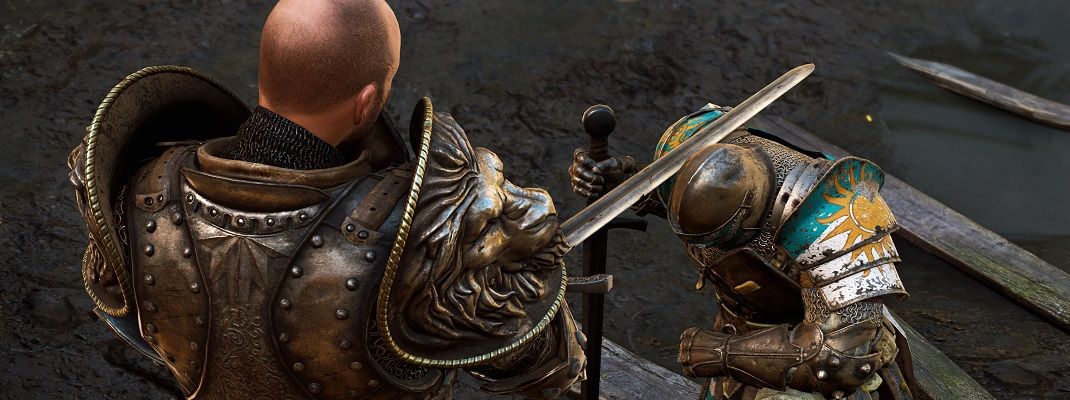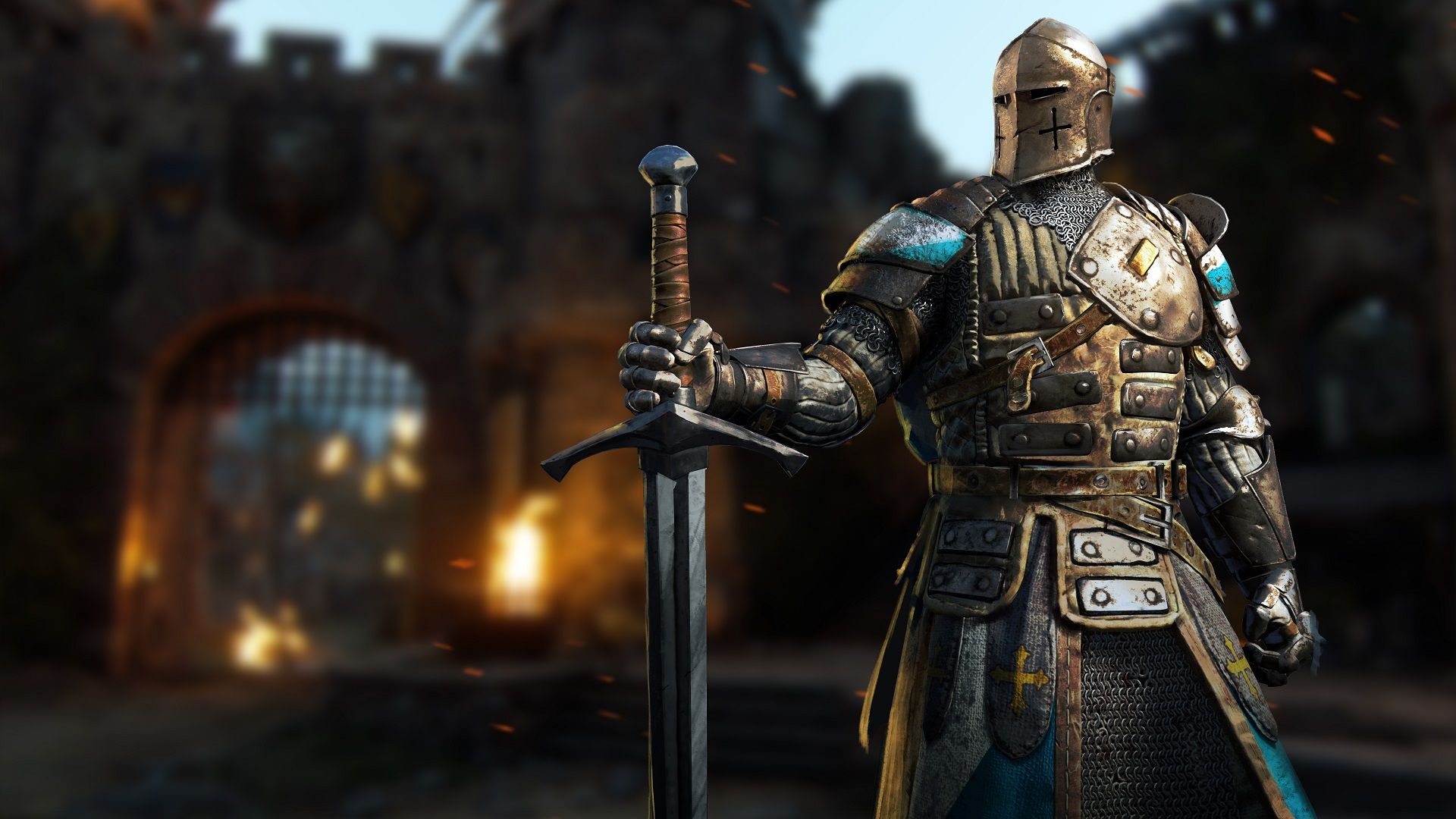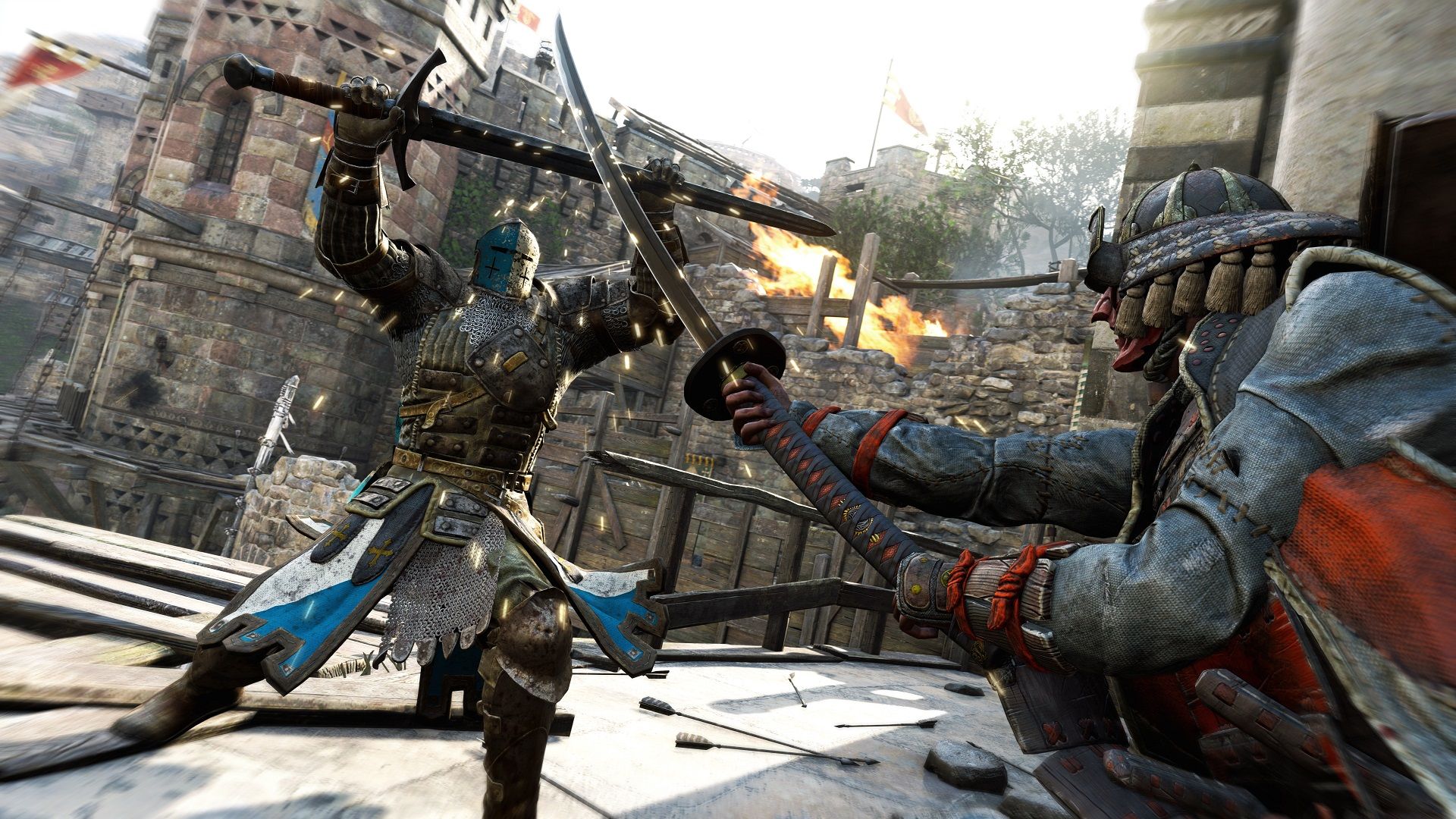Hack-and-slash games have been around for decades. While the concept has evolved over a period of generations, the situations players are thrown into haven’t. You’re always some awesome hero capable of clearing out a room full of enemies all while sustaining little damage. It’s fun but hardly realistic. Sword-dueling is, to put it simply, extremely difficult. It takes intense concentration, patience and the ability to read an opponent. This idea is the driving power behind For Honor, Ubisoft Montreal’s brand new IP.
At first glance, one would be forgiven for thinking For Honor is just another hack-and-slash game. In For Honor, you take control of knights, samurai and Vikings as each faction attempts to slaughter the other with a wide range of melee weapons. So yes, on the surface For Honor does seem like another hack-and-slash game. Taking a closer look under the hood, however, reveals a game that’s trying something different. Now, the game does become a mindless hack-and-slasher when facing off against grunt enemies, but it becomes something completely different when facing off against higher-ranking enemies.
The very first level of For Honor was shown off at E3 2016. Getting to play as a Warden, the Knight faction's all-around character, the game immediately kicked off with a tutorial to learn the nuances of swordplay. Holding L2 locks onto the nearest enemy and puts you in guard stance. From there, you get to choose which of the three stances you want to be in; high, lower-left, and lower-right. These stances not only protect you from enemy attacks coming from the same direction but also control where you attack. R1 releases a quick attack and R2 a heavy attack.
It’s a surprisingly enjoyable system that rewards players who are careful and learn to read their opponents. An indicator does convey where your opponent is attacking, so as long as you’re reading and paying attention you should have nothing to fear. It's possible that higher difficulties would remove the indicator to create a more difficult challenge. Sadly, Ubisoft wouldn’t confirm if this would be the case.
This isn’t all there is to For Honor’s combat. After finding a good rhythm, the game introduced a few more mechanics. Some knights are quite adept at blocking and will match you blow-for-blow. Enter the guard break, a useful tool that can be used at any time. Once activated, players can choose to either throw their opponent away or begin slashing away. Players are even able to dodge to avoid unblockable attacks. The AI, while never as challenging as an actual human, always managed to put up a good fight.
Fighting one-on-one with these skilled enemies can be quite exhilarating, but the momentum built from these fights easily comes crashing down. To pad out the game, For Honor introduces large swathes of grunt units that can be cut down in a single hit. For Honor is a game specifically built for epic duels against worthy adversaries, and trying to shove in these random battles with multiple grunts really killed the game’s pace.
For Honor will include a multiplayer component at launch. As mentioned earlier, the game's AI was quite impressive. Though the AI was more than capable of putting up a decent challenge, AI can never compare to an actual human. This is a game that has some huge PvP potential, but alas, multiplayer was not shown at E3. It is unknown when we’ll see it.
For Honor may not be as realistic as, say, Kingdom Come: Deliverance, but it’s more realistic than many other hack-and-slash games. Ubisoft Montreal is doing something real neat with For Honor’s gameplay by allowing players to participate in these one-on-one duels. It's still an unknown whether a full-blown campaign will work with this type of gameplay. The grunt units suggest it might not, but the combat is visceral and strategic enough to the point that players should keep an eye on For Honor. Hopefully next time we'll get to see some multiplayer.
For Honor is out February 14, 2017 on PS4, Xbox One and PC.



